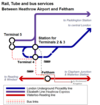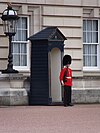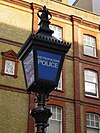London Travel Guide
A comprehensive tour guide to London with information on places to visit, things to do, where to eat and stay, local culture and customs, safety and health, transportation options, and nearby destinations.
- Introduction to London
- List of Places to Visit in London
- Hiking/Biking Routes of London
- Best Things to Do in London: Activities and Tours
- Week-Long Itinerary for London
- Food and Drink Scene of London
- Where to Stay in London: Hotels, Hostels, and Guesthouses
- What to Buy in London: Souvenirs and Local Products to Bring Home
- Local Culture and Customs of London
- Best Time to Visit London
- Do’s and Don’ts of London
- Safety and Health
- Getting to London: Transportation Options and Logistics
- How to Get Around in London
- Where to Go Next from London: Nearby Destinations and Excursions
- Conclusion
Introduction to London
London, the capital city of England and the United Kingdom, is a vibrant and diverse city with a rich history and culture. It is considered one of the leading global cities, with a variety of attractions to explore and enjoy. From museums and historic sites to trendy neighborhoods and world-class restaurants, London has something for everyone.
List of Places to Visit in London
Whether you are a first-time visitor or a seasoned traveler, you will never run out of things to do and see in London. Here are some of the must-visit places in the city:
Culturally Important Attractions: Museums and Historical Places
London is home to some of the world’s most famous museums and historical sites. Here are a few to visit:
- The British Museum: home to some of the world’s largest collections of art and artifacts, including the Rosetta Stone and the Elgin Marbles.
- The Tower of London: a historic fortress that includes the Crown Jewels and is known for its Beefeaters and ravens.
- Westminster Abbey: a stunning 13th-century church that has been the site of many royal coronations and weddings.
- The National Gallery: home to over 2,300 paintings from Europe, including works by Van Gogh, Monet, and Da Vinci.
- The Tate Modern: a modern art museum housed in a former power station, featuring works by Warhol, Rothko, and Pollock.
Natural Attractions of London: Outdoor Adventures and Scenic Views
London is not just a concrete jungle – there are plenty of green spaces and natural areas to explore. Here are some of the best:
- Hyde Park: one of the largest parks in London, featuring a boating lake, rose garden, and Kensington Palace.
- Regent’s Park: home to London Zoo and the famous Open Air Theatre, where you can catch a play during the summer months.
- The Thames Path: a walking path along the River Thames that offers stunning views of the city and crosses several iconic bridges.
- Richmond Park: a large park in southwest London that is home to over 600 deer, as well as ponds, woodland, and gardens.
Hiking/Biking Routes of London
If you are an outdoor enthusiast or just want to see a different side of London, there are plenty of hiking and biking routes to explore. Here are a few options:
- The Capital Ring: a 78-mile circular walking route around London that passes through parks, riverside paths, and historic sights.
- The London Loop: a 150-mile walking trail that circles the city through parks, woods, and quiet neighborhoods.
- The Thames Path National Trail: a 184-mile walking route that follows the River Thames from its source in the Cotswolds to the Thames Barrier near Greenwich.
- The Lea Valley Walk: a 50-mile walking trail that follows the River Lea through London’s greenbelt areas.
Best Things to Do in London: Activities and Tours
In addition to the popular attractions mentioned earlier, there are plenty of other things to do in London. Here are some activity and tour options to consider:
- Take a ride on the London Eye: a 135-meter high Ferris wheel that offers stunning views of the city.
- Visit the Camden Market: a bustling market in the Camden Town neighborhood featuring street food, vintage shops, and live music.
- Go on a Harry Potter walking tour: explore the locations used in the Harry Potter films, including the Leaky Cauldron and Diagon Alley.
- Take a Thames River Cruise: a relaxing way to see the city and its iconic landmarks from a different perspective.
- Explore the street art scene: London is home to some of the world’s best street art, with works by Banksy, Invader, and many others.
Week-Long Itinerary for London
If you have a week to spend in London, here’s a suggested itinerary:
| Day | Activities/Places to Visit |
|---|---|
| Day 1 | The British Museum, Covent Garden, West End Theatre |
| Day 2 | Tower of London, Tower Bridge, St. Paul’s Cathedral |
| Day 3 | The National Gallery, Trafalgar Square, Buckingham Palace |
| Day 4 | Hyde Park, Kensington Palace, Notting Hill |
| Day 5 | Camden Market, Primrose Hill, Regent’s Park |
| Day 6 | The Tate Modern, Shakespeare’s Globe, Southbank |
| Day 7 | Greenwich, Royal Observatory, Cutty Sark |
Food and Drink Scene of London
London is a melting pot of cultures, with an incredible food and drink scene to match. Here are some must-try dishes and local beverages:
Must-Try Dishes
- Fish and Chips: a British classic, consisting of battered fish and deep-fried chips.
- Full English Breakfast: a hearty breakfast consisting of eggs, bacon, sausages, beans, tomatoes, and black pudding.
- Pie and Mash: a traditional East End dish featuring a meat pie served with mashed potatoes and gravy.
- Sunday Roast: a Sunday tradition featuring slow-cooked meat, roasted vegetables, and Yorkshire pudding.
- London Curry: London has a thriving Indian food scene, with options ranging from traditional curry houses to modern fusion restaurants.
Local Beverages
- Gin and Tonic: a popular drink in London, featuring London Dry Gin and tonic water served with a wedge of lime.
- Real Ale: a type of beer that is brewed using traditional methods and served at room temperature. Popular brands include Fuller’s and Camden Town Brewery.
- Pimm’s Cup: a refreshing summer drink made with Pimm’s No. 1, lemonade, and fresh fruit.
- London Fog: a hot drink made with Earl Grey tea, steamed milk, and vanilla syrup.
- Coffee: London has a thriving coffee scene, with independent cafes and roasteries popping up all over the city.
Where to Stay in London: Hotels, Hostels, and Guesthouses
London offers a wide range of accommodation options to suit every budget and preference. Here are some options:
- Hotels: London has plenty of luxury hotels, including the Dorchester, the Ritz, and the Savoy.
- Hostels: for budget travelers, there are plenty of hostels in London, including YHA, Generator, and Safestay.
- Guesthouses: for a more personal touch, guesthouses are a great option. London has a variety of options, from traditional Victorian houses to modern apartments.
What to Buy in London: Souvenirs and Local Products to Bring Home
When in London, you’ll want to bring home a few souvenirs. Here are some options:
- Tea: there are plenty of tea shops in London, including Fortnum & Mason and Whittard of Chelsea.
- London-themed gifts: from red phone box keychains to London Underground map mugs, there are plenty of London-themed souvenirs to choose from.
- British sweets: favorites include Cadbury chocolate, Haribo gummy candies, and traditional boiled sweets.
- Cheddar cheese: a popular British cheese that makes a great gift.
- Harry Potter souvenirs: if you’re a fan of the books and films, you’ll want to visit the Harry Potter Shop at Platform 9 ¾.
Local Culture and Customs of London
Londoners are known for their politeness and reserve. Here are some local customs to keep in mind:
- Queueing: the British are known for their love of queues (lines). Be sure to join the end of a line and wait your turn.
- Tipping: generally, it is expected to tip 10-15% in restaurants and cafes.
- Driving on the left: in the UK, cars drive on the left side of the road, so be sure to look both ways when crossing the street.
- Pubs: pubs are an important part of the British social scene. If you’re looking to socialize with locals, head to a pub.
- Currency: the currency used in London is the Pound Sterling, which is often abbreviated as GBP or £.
Best Time to Visit London
London can be visited year-round, but the best time to visit is between March and May or September and November, when the crowds are thinner and the weather is mild. The summer months (June to August) are the peak tourist season, with more crowded attractions and higher prices.
Do’s and Don’ts of London
Here are some dos and don’ts to keep in mind during your trip to London:
Do:
- Do try the local cuisine and drinks.
- Do take public transportation: London has a great public transportation system, including the famous London Underground.
- Do bring comfortable shoes: London is a big city with lots of walking.
- Do respect local customs and traditions.
Don’t:
- Don’t stop on the left side of an escalator: if you’re not walking up the escalator, stay to the right side to let others pass.
- Don’t try to hail a taxi on the street: taxis in London must be booked in advance or picked up at designated taxi stands.
- Don’t be afraid to use “please” and “thank you”: Londoners value politeness, so be sure to use these phrases often.
- Don’t forget to bring an umbrella: London is known for its rain, so be prepared.
Safety and Health
Safety in London
London is generally a safe city, but as with any big city, it’s important to take precautions to keep yourself and your belongings safe. Here are some tips:
- Be aware of pickpockets: keep your belongings close to you and be aware of your surroundings in crowded areas.
- Take care when crossing the street: always use designated crossings and wait for the green light.
- Avoid walking alone at night: stick to well-lit areas and consider taking public transportation or a taxi instead.
Health in London
London has a high-quality healthcare system, with both private and public healthcare options available. If you need medical attention during your stay, you can visit a general practitioner (GP) or the nearest Accident and Emergency (A&E) department.
Getting to London: Transportation Options and Logistics
London is well-connected to the rest of the world, with several airports and transportation options available.
Airports Near London
- Heathrow Airport: the largest airport in London and the UK, with direct flights to destinations around the world.
- Gatwick Airport: the second-largest airport in London, with a wide range of flights to Europe and beyond.
- Stansted Airport: a popular hub for low-cost airlines, with many flights to European destinations.
- London City Airport: a small airport located in the Docklands area of London, with flights to European destinations and New York City.
Bus Stations Near London
- Victoria Coach Station: a major bus terminal in London with services to destinations throughout the UK and Europe.
- Stratford Bus Station: a bus terminal located in the Stratford area of London with services to destinations throughout the UK.
Other Options
- Train: London is well-connected by train to destinations throughout the UK and Europe.
- Car: If driving, be aware that London has a congestion charge for driving in the city center during certain hours.
How to Get Around in London
London has an extensive public transportation system, including the Tube (London Underground), buses, and trains. The easiest way to get around is to purchase an Oyster card, which can be used on all modes of public transportation.
Where to Go Next from London: Nearby Destinations and Excursions
If you have time to explore beyond London, here are some nearby destinations and excursions to consider:
- Cambridge: a historic university town located just 50 miles from London.
- Oxford: another historic university town, located 60 miles from London.
- Stonehenge: a prehistoric monument located 80 miles from London.
- Bath: a beautiful Georgian city known for its Roman baths, located 115 miles from London.
- Brighton: a seaside town located just an hour from London by train.
Conclusion
London is a city that has something for everyone. From world-class museums and historic sites to trendy neighborhoods and a thriving food and drink scene, London is a destination that should be on everyone’s travel list. Follow this comprehensive tour guide to make the most of your time in this incredible city.
London Image Gallery
 Historical Routemaster double-decker bus outside St Paul's cathedral
Historical Routemaster double-decker bus outside St Paul's cathedral
 The Tower of London
The Tower of London
 The Elizabeth Tower is the iconic tower that is home to the bell known as 'Big Ben'
The Elizabeth Tower is the iconic tower that is home to the bell known as 'Big Ben'
 The view over the River Thames towards Westminster from the London Eye
The view over the River Thames towards Westminster from the London Eye
 Summary map of rail connections to London airports
Summary map of rail connections to London airports
 Rail and Tube lines go to different terminals at Heathrow
Rail and Tube lines go to different terminals at Heathrow
 The terminal at Stansted Airport
The terminal at Stansted Airport
 London City Airport
London City Airport
 Terminal stations of London.
Terminal stations of London.
 Transport for London's rail network: the Tube, Overground, DLR, Trams, TfL Rail. The non-TfL National Rail network is not shown
Transport for London's rail network: the Tube, Overground, DLR, Trams, TfL Rail. The non-TfL National Rail network is not shown
 Oyster Card
Oyster Card
 Oyster card reader
Oyster card reader
 Geographic Central London Underground map
Geographic Central London Underground map
 London Underground stations are identified with signs like these, and Overground stations have a similar symbol with an orange circle. Rail travel in the United Kingdom. National Rail stations have a different "double-arrow" symbol.
London Underground stations are identified with signs like these, and Overground stations have a similar symbol with an orange circle. Rail travel in the United Kingdom. National Rail stations have a different "double-arrow" symbol.
 Bus stop
Bus stop
 A reminder on the streets of London to "Look Right" when you cross the road
A reminder on the streets of London to "Look Right" when you cross the road
 London Cab
London Cab
 A river bus at Tower Millennium Pier
A river bus at Tower Millennium Pier
 The view from Greenwich Observatory which is easily reached by boat services plying the Thames
The view from Greenwich Observatory which is easily reached by boat services plying the Thames
 Buckingham Palace
Buckingham Palace
 St Paul's Cathedral
St Paul's Cathedral
 Tower Bridge from South Bank
Tower Bridge from South Bank
 Natural History Museum, Hintze Hall
Natural History Museum, Hintze Hall
 St James's Park in central London
St James's Park in central London
 One of more than 800 Blue Plaques throughout London
One of more than 800 Blue Plaques throughout London
 A Guardsman on duty at Buckingham Palace
A Guardsman on duty at Buckingham Palace
 Harrods
Harrods
 Kappacasein cheese toastie from Borough Market
Kappacasein cheese toastie from Borough Market
 A Traditional 'Blue Lamp' outside a Police Station in London
A Traditional 'Blue Lamp' outside a Police Station in London
